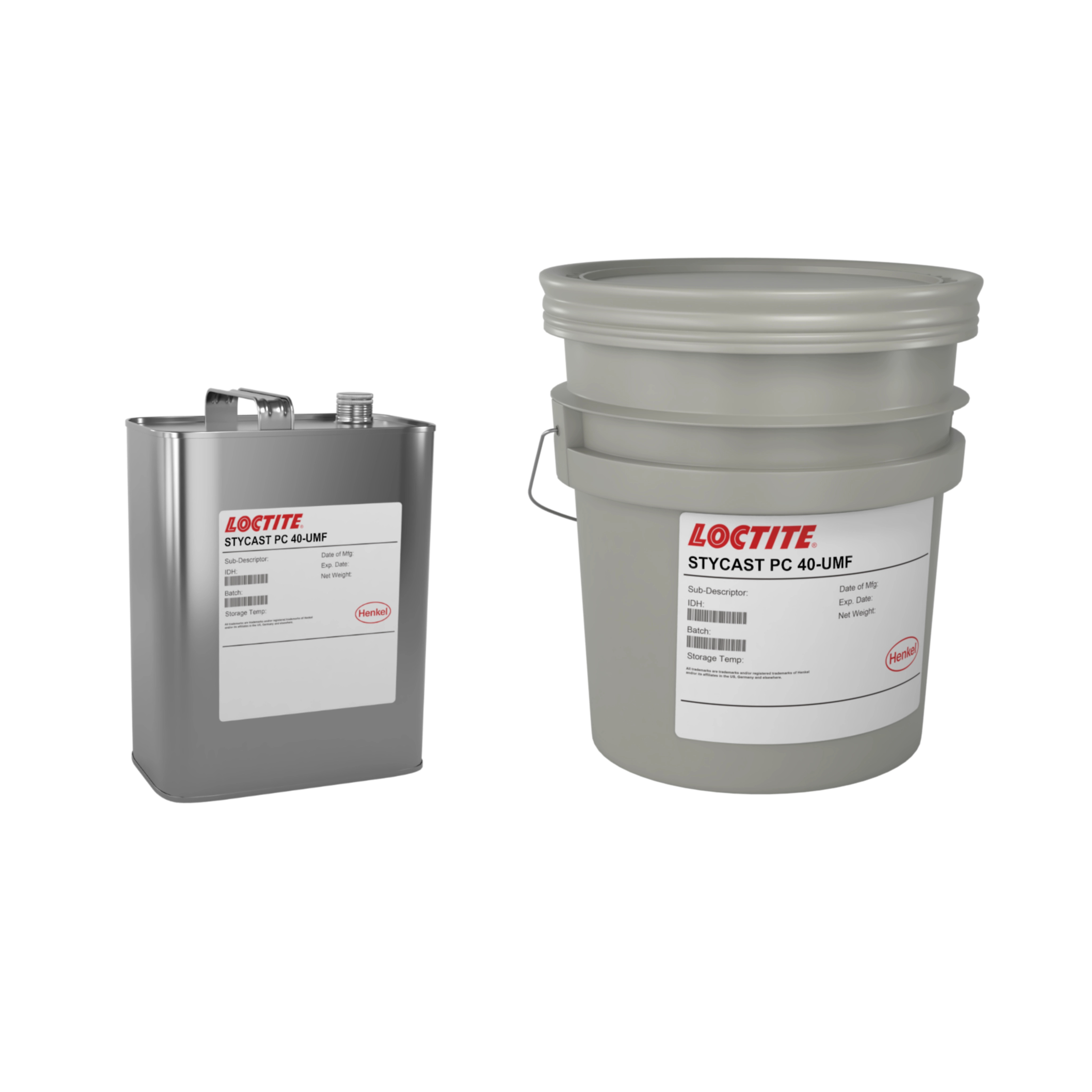LOCTITE STYCAST PC40-UMF
Harmonization Code : 3907.30.00.90 | Polyacetals, other polyethers and epoxide resins, in primary forms; polycarbonates, alkyd resins, polyallyl esters and other polyesters, in primary forms : Epoxide resins : Other
Main features
- VOC free
- Single component
- UV and Moisture cure
Product Description
LOCTITE® STYCAST PC 40-UMF conformal coating is specifically formulated to rapidly gel and immobilize when exposed to UV light and then fully cure when exposed to atmospheric moisture, ensuring optimum performance even in shadowed areas.
LOCTITE STYCAST PC 40-UMF offers very low outgassing and CVCM content that conforms to IPC-CC-830 requirements. It is a great product for multiple substrates, including a variety of metal surfaces, ceramic, and glass filled epoxy.
Advantages of Loctite Stycast PC 40-UMF
- Single Component
- VOC free
- UV and moisture curable
Cure Schedule
- 10 seconds @ 300 to 600 mW/cm² UV
- Wavelength, nm 365
Technical Specifications
| General Properties | |||||||
| |||||||
| Specific Gravity Specific Gravity Specific gravity (SG) is the ratio of the density of a substance to the density of a reference substance; equivalently, it is the ratio of the mass of a substance to the mass of a reference substance for the same given volume. For liquids, the reference substance is almost always water (1), while for gases, it is air (1.18) at room temperature. Specific gravity is unitless. | 1.08 | ||||||
| Physical Properties | |||||||
| Viscosity Viscosity Viscosity is a measurement of a fluid’s resistance to flow. Viscosity is commonly measured in centiPoise (cP). One cP is defined as the viscosity of water and all other viscosities are derived from this base. MPa is another common unit with a 1:1 conversion to cP. A product like honey would have a much higher viscosity -around 10,000 cPs- compared to water. As a result, honey would flow much slower out of a tipped glass than water would. The viscosity of a material can be decreased with an increase in temperature in order to better suit an application | 250 mPa.s | ||||||
| Electrical Properties | |||||||
| Dielectric Strength Dielectric Strength Dielectric strength is measured in kV per mm and is calculated by the Breakdown voltage divided by the thickness of the tested material. Those two properties go hand in hand and while Breakdown voltage is always thickness dependent, dielectric strength is a general material property. As an example, the dielectric strength of Polyimide is 236 kV/mm. If we place 1mm of Polyimide between two electrodes, it will act as an insulator until the voltage between the electrodes reaches 236 kV. At this point it will start acting as a good conductor, causing sparks, potential punctures and current flow. | 16.5 kV/mm | ||||||
| Surface Resistivity | 3.8x10^16 Ohms/sq | ||||||
| Volume Resistivity Volume Resistivity Volume resistivity, also called volume resistance, bulk resistance or bulk resistivity is a thickness dependent measurement of the resistivity of a material perpendicular to the plane of the surface. | 3.5x1017 Ohms⋅cm | ||||||
| Mechanical Properties | |||||||
| |||||||
| Thermal Properties | |||||||
| Thermal Conductivity Thermal Conductivity Thermal conductivity describes the ability of a material to conduct heat. It is required by power packages in order to dissipate heat and maintain stable electrical performance. Thermal conductivity units are [W/(m K)] in the SI system and [Btu/(hr ft °F)] in the Imperial system. | 0.26 W/m.K | ||||||



